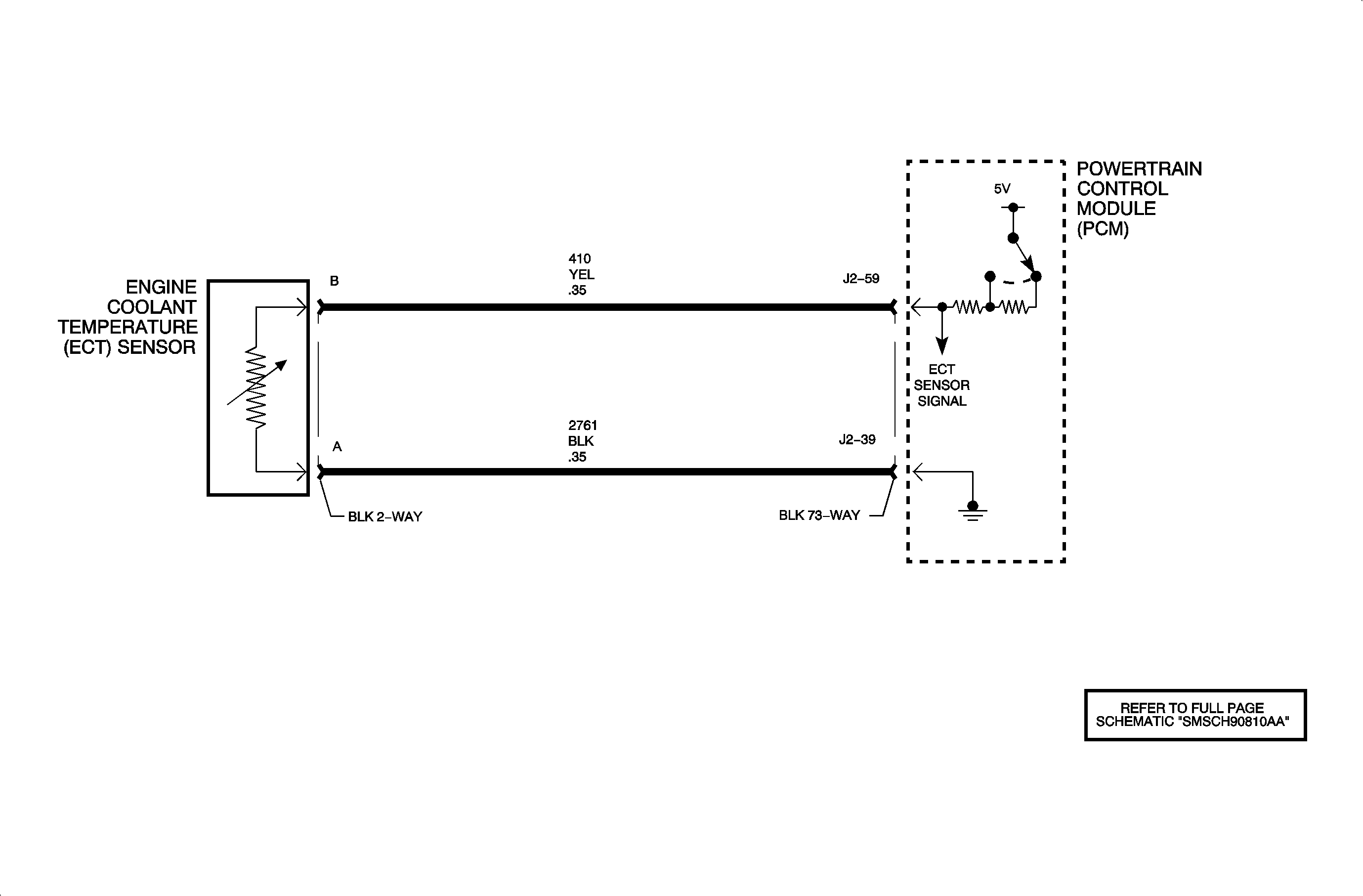
The engine coolant temperature (ECT) sensor is a thermistor that varies resistance
according to changes in engine coolant temperature. The PCM supplies a 5 volt
reference through a pull-up resistors to the sensor, which is connected to ground.
When the sensor is cold it has a high resistance (high signal voltage at PCM). As
the sensor temperature increases, its resistance decreases (lower signal voltage at
PCM). The PCM uses the signal voltage to determine engine coolant temperature. DTC P0128
sets when the calculated accumulated airflow exceeds the predicted accumulated airflow
when the engine coolant temperature has reached a calibrated temperature. More air
will flow through a cold engine then when the engine is warm.
DTC Parameters
DTC P0128 will set if the calculated accumulated airflow has been exceeded,
based on predicted airflow, when the ECT sensor temperature has reached 70°C (158°F)
when:
| • | The vehicle has traveled greater than 2.4 km (1.5 miles)
when the vehicle speed is above 40 km/h (25 mph). |
| • | The engine run time is between 30 seconds and 30 minutes. |
| • | The startup ECT is less than 65°C (149°F). |
| • | The IAT is greater than -7°C (+19°F). |
| • | The calculated average air flow is greater than 20 g/s. |
| • | No CKP, ECT, EVAP leak, fan control, fuel injector, fuel trim, IAT, MAP,
misfire, TP, vehicle speed, P0130, P0602, or P1621 DTCs have been set. |
DTC P0128 diagnostic runs once per ignition cycle once the above
conditions have been met.
P0128 is a type B DTC
Diagnostic Aids
DTC P0128 indicates a lower than normal engine coolant temperature, which most
likely was not caused by a short/open or intermittent short/open in the ECT wiring.
Possible causes of low engine coolant temperature:
| • | Very low ambient temperatures |
| • | Corrosion in connector or resistance in wiring |
Refer to ECT General Description for a Temperature vs. Resistance chart.

